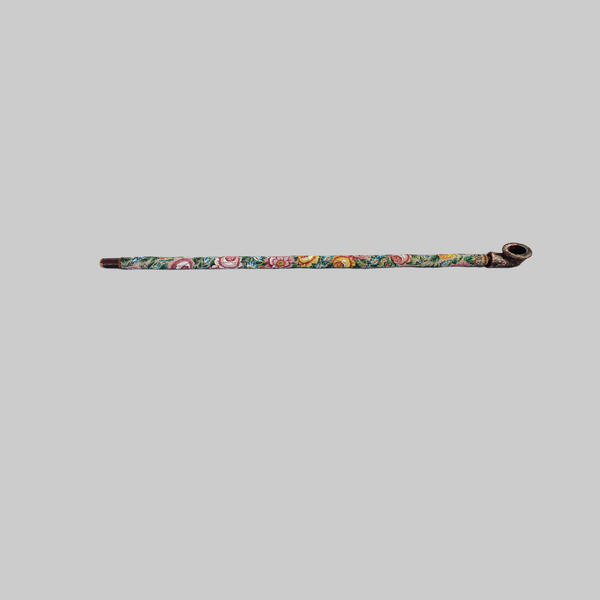The first clay tobacco pipes appeared in England back in 1575. But at that time smoking was frowned upon at the royal court, and most English pipe makers moved to Gouda, in Holland. Back then, pipes were made with small bowls, as tobacco was an expensive luxury. Slowly, as more suppliers of tobacco appeared, both in America and in other countries, pipes were made with larger bowls.
The clay used to make the Dutch pipes came from Germany. In the 17th Century the city of Gouda was home to more than 500 master pipe makers. A little later on, manufacturers set up business in Germany, Poland and Russia. In the Ottoman Empire pipes were generally made with clay bowls and the expensive mouthpieces were made of amber. Every royal court had a chibouk keeper - a special official who was responsible for looking after the pipes and tobacco. In Asia and the Pacific Ocean region, bamboo pipes were very popular. A small bamboo cylinder, or partially dried gourd was inserted at right angles into a long bamboo tube. The large reservoir of air had the effect of cooling the smoke.
The tobacco pipe displayed in the Decembrists in Yalutorovsk exhibition, in the Matvey Muravyov-Apostol Memorial House, was made in 1840. It was presented to the Museum by Nikolai Vasilevich Zubarev, Director of the Yalutorovsk Regional Decembrist Memorial Museum. He was given the pipe on one of his study trips, back in 1984. The tobacco pipe belonged to a Moscow resident, Klavdiya Sergeyeva. The State Historical Museum recommended her to donate the pipe to the collection in Yalutorovsk. It can now be seen in the Decembrists in Yalutorovsk exhibition.
The mouthpiece, bowl and stem are made of different materials. The long stem is made of cherry wood, covered with a fine beadwork design of red and yellow roses, small blue flowers, leaves and the letters VS, and the date 1840. The bowl of the pipe and the mouthpiece are made of ceramic and reddish-brown wood. The bowl is conical in shape and is decorated with a recessed line around the edge and a stripe made of small circles.
The clay used to make the Dutch pipes came from Germany. In the 17th Century the city of Gouda was home to more than 500 master pipe makers. A little later on, manufacturers set up business in Germany, Poland and Russia. In the Ottoman Empire pipes were generally made with clay bowls and the expensive mouthpieces were made of amber. Every royal court had a chibouk keeper - a special official who was responsible for looking after the pipes and tobacco. In Asia and the Pacific Ocean region, bamboo pipes were very popular. A small bamboo cylinder, or partially dried gourd was inserted at right angles into a long bamboo tube. The large reservoir of air had the effect of cooling the smoke.
The tobacco pipe displayed in the Decembrists in Yalutorovsk exhibition, in the Matvey Muravyov-Apostol Memorial House, was made in 1840. It was presented to the Museum by Nikolai Vasilevich Zubarev, Director of the Yalutorovsk Regional Decembrist Memorial Museum. He was given the pipe on one of his study trips, back in 1984. The tobacco pipe belonged to a Moscow resident, Klavdiya Sergeyeva. The State Historical Museum recommended her to donate the pipe to the collection in Yalutorovsk. It can now be seen in the Decembrists in Yalutorovsk exhibition.
The mouthpiece, bowl and stem are made of different materials. The long stem is made of cherry wood, covered with a fine beadwork design of red and yellow roses, small blue flowers, leaves and the letters VS, and the date 1840. The bowl of the pipe and the mouthpiece are made of ceramic and reddish-brown wood. The bowl is conical in shape and is decorated with a recessed line around the edge and a stripe made of small circles.



